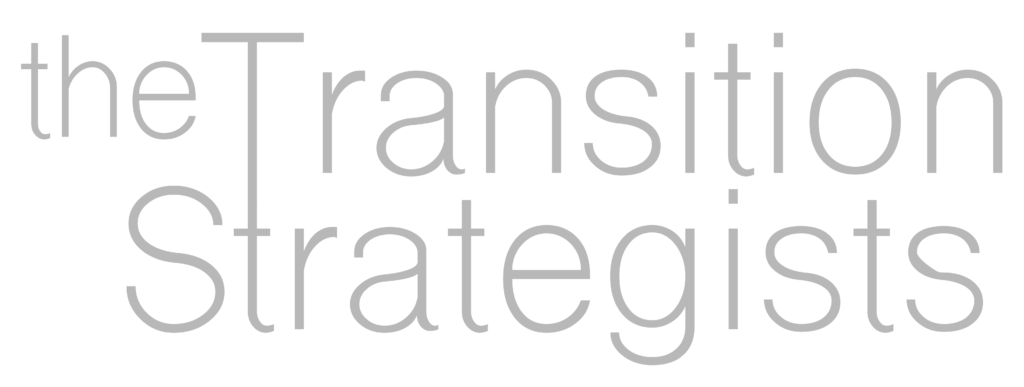In our last post, we asked you to consider two forms of business governance: formal and informal. As transition strategists, see the huge advantages of formal business governance, especially in family businesses and especially before transitions begin. In this article, we approach the topic from a different perspective and ask you to consider the two types of family business governance: the dinner table vs. the board table.
The Advantages of Formal Family Business Governance
We compare setting up formal governance to setting up a classroom in which peers share perspectives, ask questions, hold healthy debates, and then vote. Everyone leaves the experience having learned something about how participants think and make decisions.
The formal governance “classroom” also provides a place to:
• Apply the brakes if new owners who lack experience take a wrong turn or move to implement their ideas without careful consideration.
• Include all owners in discussions in an organized and democratic way.
• Manage the input of owners who are not active in the business.
• Pass wisdom and insights from one generation to the next.
• Enable members of an older generation to learn from the next one and allow the younger generation to be heard regarding their vision and direction.
• Provide a forum to air all perspectives before making important decisions about major issues such as the direction of the business, debt, the acquisition of another business, or the purchase or sale of shares.
In transitions, formal governance gives owners the opportunity to:
• Observe how their successors think through and react to various situations.
• Create alignment through good communication.
• Offer their successors the benefit of their experience and guidance.
The Family Dinner Table
Some owners tell us that formal governance isn’t necessary because the next generation understands the business because they grew up hearing about it every night at the dinner table. We’ll save our concerns about the connection between dinner table conversations and understanding a business for another time. For now, we would point out that rarely is everyone at a dinner table active in a business. We’ve observed that those not actively involved do not really enjoy being excluded from conversations. Even some of those who are active in a business prefer to use family time for fun and relaxation rather than as a forum for discussing or debating business issues.
The Board of Directors’ Table
When you replace your dinner table with a board table, everyone invited to take a seat knows that the focus of discussion will be the business. They know when decisions will be made and that their voices will be heard. Open communication and thoughtful discussion create trust among members. Members know they will participate in lively debates about issues related to the business, and address—in an organized way—concerns, opportunities, and threats. Everyone is free to disagree and express themselves, and unlike at a dinner table, everyone has a vote. A board provides a structure that allows individuals to make their best arguments, and others to judge the value of those arguments with their votes.
The Purpose of a Board of Directors
A board’s official purpose is to represent and act in the interests of the members or shareholders. Board members have a fiduciary duty to the shareholders to keep a company running so it provides a healthy return on their investment. Board members create a vision for a company (what it wants to be) and determine how much cash it will take to achieve the vision. A board assesses risk, hires and manages the CEO, and helps the CEO reach the board’s vision for the company, using a board-approved strategy and a budget.
You can find a brief guide to governance in our book, It’s A Journey. We answer the most common questions owners ask about the operations of a board.
Speedboat or Aircraft Carrier?
Owners will often compare themselves to captains of their ships. If by captains, they mean the one who makes all the decisions, we agree. But ships? Not really. Most owners are captains of speedboats. By making all the decisions, their companies can move and respond quickly.
When we suggest formal governance to these owners, in their minds they see huge aircraft carriers—difficult to maneuver and not built for speed.
Formal governance does make a business more like an aircraft carrier, in that it takes a crew to move it from place to place. The advantage of a carrier, however, is that its crew adheres to rules and procedures that govern decision-making customized to that carrier. That’s very appealing to owners / captains who are justifiably concerned they may find out about poor decisions when it is too late to rectify adverse consequences. Yes, formal governance slows things down. It also requires communication and distributes decision-making power—two critical practices during business transitions. By defining the limits of authority, however, governance enables a company to remain nimble in a dynamic business environment. In essence, formal governance provides the best of both worlds: the agility of a speedboat with the discipline of a well-run ship.
Elizabeth Ledoux is a co-author of the award-winning It’s A Journey: The MUST-HAVE Roadmap to Successful Succession Planning, as well as Accelerate Your Entrepreneurial Flight and Understanding the Growth of the Entrepreneur. She frequently speaks to organizations and business owners about challenges and opportunities in private and family business transitions, business and individual growth, and the business succession journey.
She serves as Chair for TIGER 21 in Denver, Colorado and was Chair for 14 years of the Women Presidents’ Organization’s Denver chapter.





